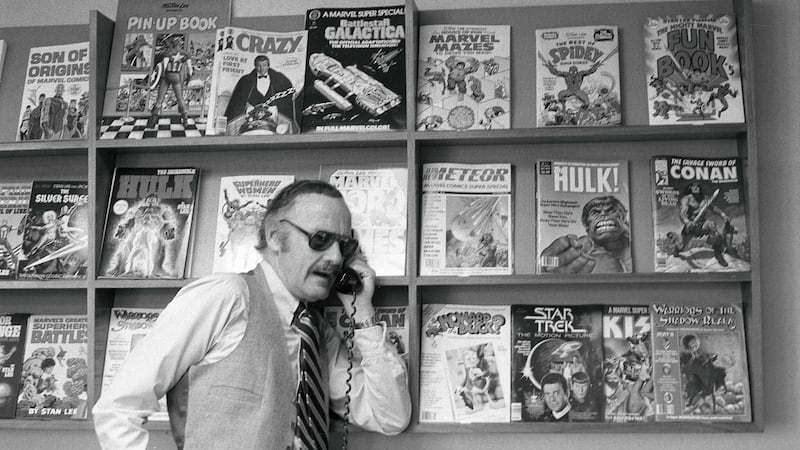It could be argued that Stan Lee, who has died at 95, appeared in more of the 50 highest-grossing films of all time than any other actor.
Of course, he wasn't actually an actor but as editor-in-chief of Marvel Comics – home of Spider-Man, Captain America and The Fantastic Four – Lee had an enormous impact on US popular culture. The superheroes became national icons. They decorated lunch boxes, T-shirts and posters.
After a few false starts, the Marvel empire eventually moved into cinema. Films such as Iron Man, The Avengers and Thor were massive hits and, providing brief cameos for every episode, Lee found himself smiling at whole new audiences. He appears in the two highest-grossing films of this year: as a casino patron in Black Panther and as a bus driver in Avengers: Infinity Wars.

Stanley Martin Lieber was born in the Upper West Side of Manhattan to Jewish parents from Romania. He had ambitions to write fiction as a young man and, when he drifted into comics, adopted the pseudonym “Stan Lee” as he was saving his birth name for an assault on the great American novel.
He first worked in the Signal Corps during the second World War and then moved on to writing copy for the Training Film Division. After leaving the army, he became swept up in later years of the much-vaunted “golden age of the American comic book”.
‘The Fantastic Four’
Lee wrote conventional comics in various genres for Atlas Comics throughout the 1950s. The great leap forwards came in the early 1960s when he and Jack Kirby, one of the medium's greatest artists, created The Fantastic Four.
Up to that point, superheroes and their alter egos had been bland, perfect Übermensch. There was no sense they had interior lives. They were never assailed by the everyday problems of modern existence. Lee and his team changed all that. From now on the characters would be allowed girlfriends, financial inconveniences and fits of social unease.
“They’d be fallible and feisty and, most important of all, inside their colourful, costumed booties they’d still have feet of clay,” he said some years later.
The formula proved a massive success and Marvel Comics became a defining force in the cultural rearrangements of the 1960s. Spider-Man, created in 1962, was not just a superhero comic; it was also a sprawling soap opera. Peter Parker, the web-crawler's alter ego, was bullied in school, fell for Mary Jane Watson, got a job as a news photographer and then grieved for Gwen Stacy.
Cartoon cameos
As the 1970s dawned, Lee’s own persona became more prominent. He helped fight back against the puritanical Comics Code and, in 1972, took over as publisher of Marvel.
Veterans of that era will remember Stan – rendered as a bold cartoon – popping up throughout the comics to address correspondents and announce new developments. No creator in the comic books world has ever had such visibility. Like Alfred Hitchcock, he became his own trademark.
Married to Joan Boocock Lee, a model and actor, from 1947 until 2017, Lee appeared to relish the even greater success that arrived with the Marvel Cinematic Universe in this century. With takings of more than $15 billion, the series stands as the most successful franchise in movie history.
That’s some journey for the son of an intermittently employed Romanian dress cutter.












